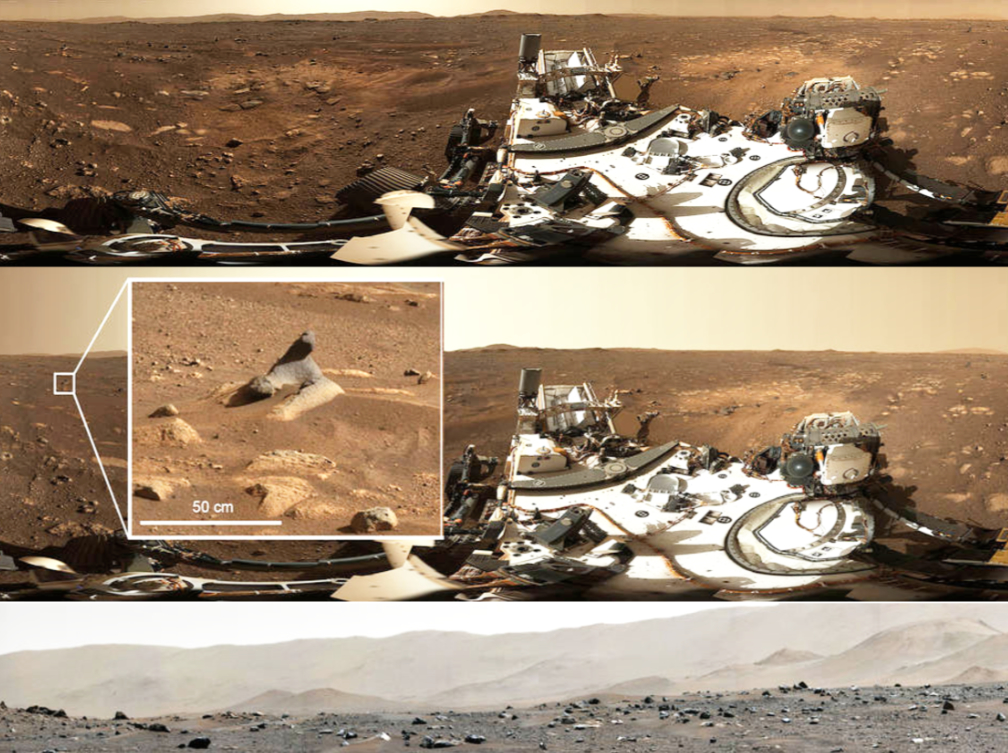
Middle image: Annotated versions of this panorama include a scale bar and close-ups of rock features seen in the distance. This wind-carved rock seen in first 360-degree panorama (second image) taken by the Mastcam-Z instrument shows just how much detail is captured by the camera systems. Credits: NASA/JPL-Caltech/MSSS/ASU
Bottom image: A detail shot from the top of the panorama shows the rim of Jezero Crater, Perseverance’s landing site. This shows the rim of Jezero Crater as seen in the first 360-degree panorama taken by the Mastcam-Z instrument aboard NASA’s Perseverance Mars rover. Image Credits: NASA/JPL-Caltech/MSSS/ASU
NASA’s Mars 2020 Perseverance rover got its first high-definition look around its new home in Jezero Crater on February 21 after rotating its mast, or “head,” 360 degrees, allowing the rover’s Mastcam-Z instrument to capture its first panorama after touching down on the Red Planet on February 18. This was the rover’s second panorama ever, as the rover’s Navigation Cameras, or Navcams, also located on the mast, captured a 360-degree view on February 20.
Mastcam-Z (pictured above) is a dual-camera system equipped with a zoom function, allowing the cameras to zoom in, focus, and take high-definition video, as well as panoramic color and 3D images of the Martian surface. With this capability, the robotic astrobiologist can provide a detailed examination of both close and distant objects.
The cameras will help scientists assess the geologic history and atmospheric conditions of Jezero Crater and will assist in identifying rocks and sediment worthy of a closer look by the rover’s other instruments. The cameras also will help the mission team determine which rocks the rover should sample and collect for eventual return to Earth in the future.
Stitched together from 142 images, the newly released panorama reveals the crater rim and cliff face of an ancient river delta in the distance. The camera system can reveal details as small as 0.1 to 0.2 inches (3 to 5 millimeters) across near the rover and 6.5 to 10 feet (2 to 3 meters) across in the distant slopes along the horizon.
The detailed composite image shows a Martian surface that appears similar to images captured by previous NASA rover missions.
“We’re nestled right in a sweet spot, where you can see different features similar in many ways to features found by Spirit, Opportunity, and Curiosity at their landing sites,” said Jim Bell of Arizona State University’s School of Earth and Space Exploration, the instrument’s principal investigator. ASU leads operations of the Mastcam-Z instrument, working in collaboration with Malin Space Science Systems in San Diego.
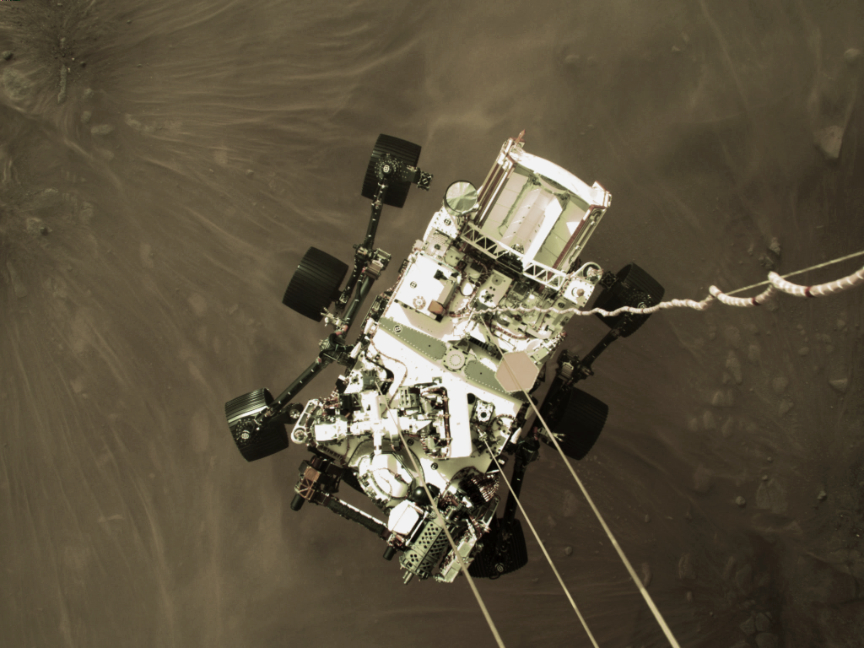
NASA’s Mars Perseverance Rover touched down on the Red Planet on February 18, with DPA Microphones along for the historic ride.
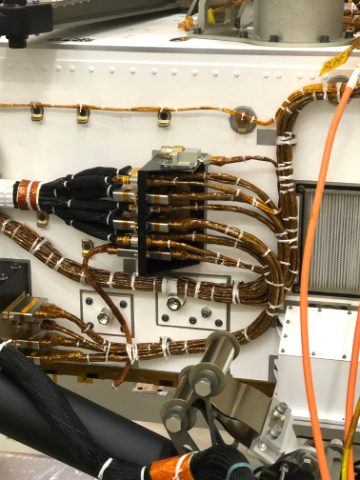
Outfitted with DPA’s 4006 Omnidirectional Microphone, MMA-A Digital Audio Interface and MMP-G Modular Active Cable, the rover provided the first sounds from the surface of Mars. After being put through vigorous testing by NASA scientists, the DPA equipment, affixed to the Mars Perseverance Rover, officially launched into space aboard the Atlas V-541 rocket in July 2020.
Over the past seven months, the DPA equipment has faced pressure changes while leaving Earth’s atmosphere and again when entering the Martian surface, and extreme temperatures — as low as -100 Celsius/-148 Fahrenheit —on Mars. Additionally, the DPA gear has endured the massive vibrations caused by the rocket launch and subsequent landing on Mars.
After the rover touched down on the Red Planet, audio and video files were recorded from the surface and transmitted to NASA’s base station.
As yet another example of the close collaboration between DPA and NASA, the initial audio files were sent to DPA’s engineering team for processing,and subsequently back to NASA for final analyzing and publishing. Following several days of review, the team was pleased to find that the durability of the DPA mic allowed it to withstand space travel as well as that the audio captured was as incredible as expected.
The ability of DPA products to perform following the rigors of space travel was considered paramount to NASA’s selection of the solution. Though the layout of the microphone amplifier and chassis of the MMA-A each required modifications in order to be affixed to the rover, the mechanics of the devices are exactly the same as those found in every DPA solution.
The Perseverance rover lands on Mars with technology from SENER Aeroespacial on board.

On February 18th at 22 pm (Spanish time), the Perseverance rover, with SENER Aeroespacial technology, landed on Mars, starting the exploration of the Red Planet as part of the National Aeronautics and Space Administration (NASA) mission, called Mars 2020.
SENER Aeroespacial designed, manufactured, tested and integrated the pointing mechanism for the high gain antenna that allows direct two-way communication between the Perseverance rover and tracking stations on Earth.
As on the previous NASA Mars mission —Mars Science Laboratory (MSL)—, SENER Aeroespacial has been responsible for the HGAG pointing mechanism in cooperation with Airbus Defence and Space, main contractor for the system that comprises the gimbal and the high gain antenna.
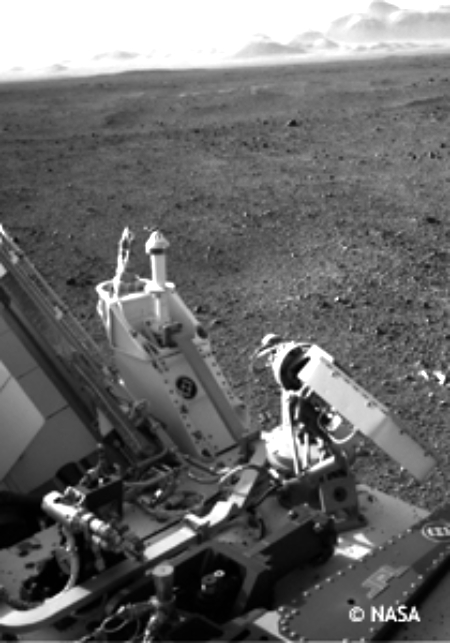
The pointing mechanism has two degrees of freedom, azimuth and elevation, and is integrated on the rover platform, from where it can point the antenna precisely toward Earth. An actuator moves each axis independently to achieve the required velocity and accuracy. SENER Aeroespacial was also responsible for the hold down and release mechanism that provides a mechanical connection during launch and allows the subsequent operation of the antenna in Mars.
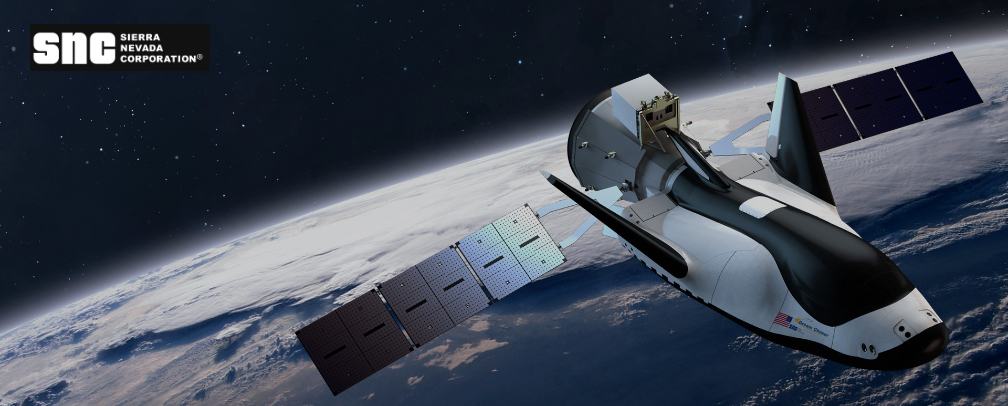
Sierra Nevada Corporation (SNC) supported the successful landing of a rover onto the Mars surface. SNC provided the descent brake mechanism and other critical technology for NASA’s Perseverance rover, marking the company’s 14th mission to the red planet.
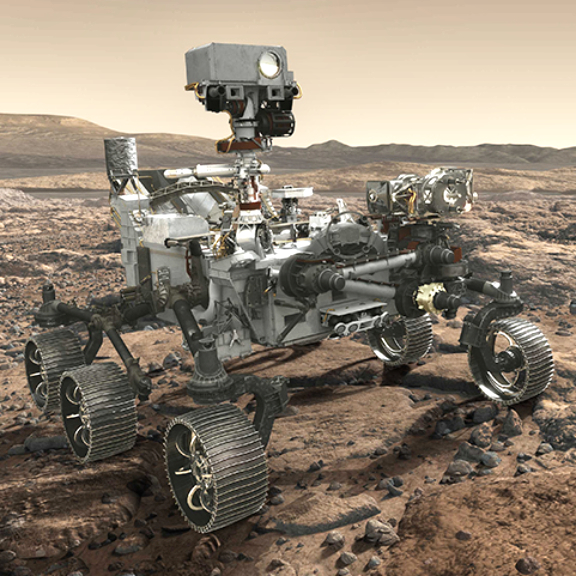
As the rover began its descent to Mars, the SNC-engineered descent brake mechanism slowly guided the rover to the surface during the sky crane maneuver phase of the landing sequence. The mechanism ensured that Perseverance was lowered at the correct speed to both provide a soft landing, and allow the sky crane to preserve enough fuel for it to safely exit the landing area.
Without this mechanism, which was first used to lower NASA’s Curiosity rover to the Mars surface, the rover could have been damaged before ever starting to explore the Mars surface.
SNC has eight mechanisms onboard the rover that are used in 17 different applications.
These will be used at various points throughout the rover’s life on the Martian surface, including deployment of the first aircraft on another planet. The Perseverance rover is carrying Ingenuity, a helicopter that will perform the first experimental flight test at Mars. SNC’s gearmotors will carefully rotate the rover’s deployment system bringing the helicopter to its position before deployment to the surface.
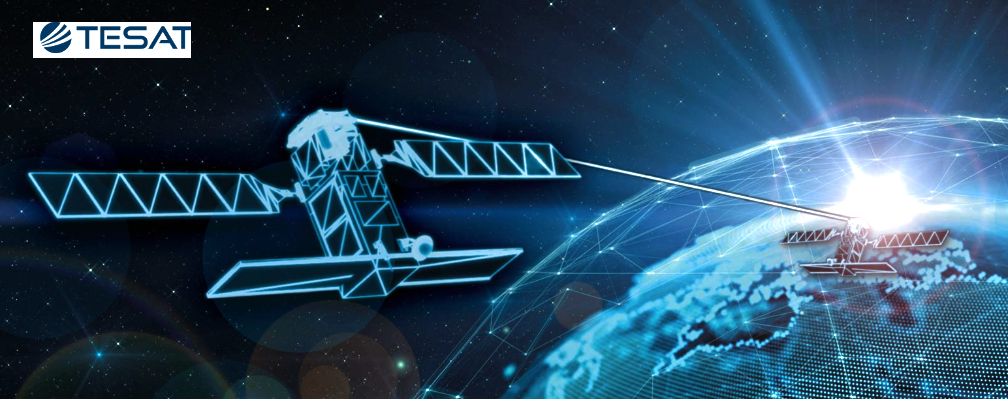
TESAT Technology sends data from Mars to Earth
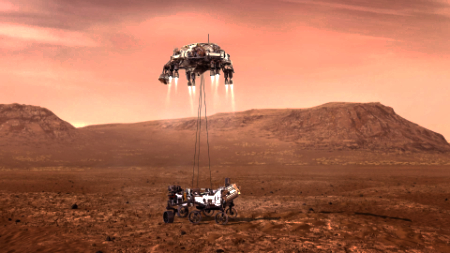
For the first time in history, sound signals from Mars were received on Earth and gave an idea on how the Red Planet sounds like. This, as well as having the opportunity to look at photos of Mars’ surface, are only possible through technology made by TESAT in Baden-Wuerttemberg.
The responsible technology is the TWTA that amplifies an outgoing radio frequency signal to make it receivable in far distances. Without these devices, signals from far away spacecraft would not be powerful enough to reach Earth.
In context of the current Mars mission, several spacecraft make use of this specific TESAT technology.
Directly before the touchdown of Mars rover Perseverance, a TWTA on the Sky Crane was responsible to send the essential telemetry data to confirm the safe and soft lowering.
“TESAT technology helps connecting people and to overcome borders all over the world – and beyond! Our products suspend the boundaries of the final frontier and help to make the unknown concrete. As TESAT we are proud to be part in so important missions,”
said Dr. Marc Steckling, CEO, TESAT
As Perseverance itself is not powerful enough to send data directly to Earth, it uses both current Mars orbiters as relay stations: Mars Reconnaissance Orbiter (MRO), whose own purpose is the exploration and investigation of the planet Mars, and MAVEN, which investigates Mars’ atmosphere. Both orbiter have several amplifying devices from TESAT on board to send their collected data to Earth – now including data from Perseverance.
